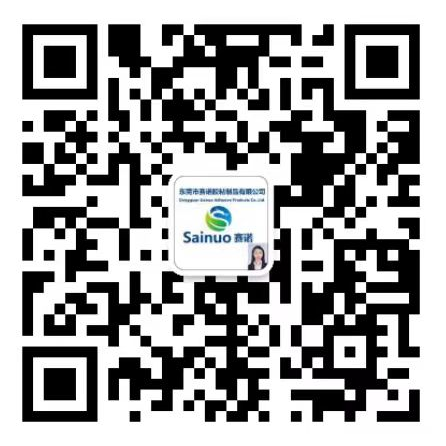Largje Film për Largtreshnja Sigur dhe Largtreshnje Flekseble
Larg dhe Larg: Mësoni mbi Filmat me Lip për Aplikime Etikete
Përshkrim Kryesor i Fillestar të Filmave me Lip për Larg dhe Larg Bonding
Filmat e ngjitshëm ngjiten mirë në të gjitha llojet e sipërfaqeve, gjë që i bën të nevojshme për vendosjen e etiketave në një sërë sektorësh të ndryshëm, nga paketimi i ushqimeve deri te medikamentet dhe kontenierët e transportit. Ajo që vërtetë llogarit kur flitet për mënyrën se sa mirë funksionojnë këto filma është gjëra të tilla si sa të lehta hiqen (ngjitja për hiqje), aftësia e tyre për të qëndruar ndaj presionit anësor (fortësia e shkurtimit) dhe si shtresat e brendshme mbahen së bashku (fortësia e bashkëveprimit). Etiketat duhet të qëndrojnë në vendin e tyre pa marrë vesh, pavarësisht nëse po goditen gjatë transportit apo po qëndrojnë në kushte ekstreme të motit. Studimet tregojnë se filmat me forcë të fortë të shkurtimit mund të përballojnë forcat anësore shumë më mirë, kështu që janë të shkëlqyeshëm për artikujt që zhvendosen shpesh apo transportohen në largësi të mëdha. Etiketat e jashtme gjithashtu kanë nevojë për mbrojtje kundër gjërave të tilla si uji i shiut dhe ekspozimi ndaj diellit, përndryshe ato do të zhduken apo thjesht do të bien pas një kohe, gjë që askush nuk e do.
Kërkesa për Flexibilitet në Larg Sotme të Etiketimit
Fleksibiliteti është bërë një karakteristikë e domosdoshme në teknologjitë e etiketimit të sotme, veçanërisht kur bëhet fjalë për materiale që duhet të ngjiten në të gjitha llojet e formave dhe sipërfaqeve të çrregullta. Aftësia për të u përkulur dhe për të shtrirë bën që këto filma të ngjiteshëm të bëjnë mrekulli në përdorime të ndryshme, nga mbështjellja e ushqimeve deri te produktet industriale. Kur aplikohen në mënyrë të duhur, filmat e ngjiteshëm të fleksueshëm mund të mbështjellin shtypur rreth çdo forme produkti dhe të mbajnë mjaftueshëm të fortë për të ruajtur identitetin e markës dhe për të përmbushur standardet rregullatore. Merrni si shembull tregtinë elektronike ku paketat ndryshojnë shumë në madhësi dhe formë. Këtu, etiketat me të vërtetë duhet të jenë në gjendje të përballojnë përkuljet e përsëritura pa u çliruar gjatë transportit apo manipulimit. Marrja e përshtypjeve nga përdoruesit e vërtetë gjatë fazës së dizajnit ndihmon në krijimin e etiketave që jo vetëm që funksionojnë mirë, por që gjithashtu dukejin të mira në raftet, duke arritur një ekuilibër midis praktikësisë dhe tërheqësisë vizuale që bën që klientët të kthehen përsëri.
Llojet e Hartës Lijmike për Përdorim Industriale
Karakteristikat e Rulisë të Hartës Lijmike Kraft
Letra me dorëzë e fortë dallon për shkak të fortësisë dhe fleksibilitetit të saj, e cila funksionon mirë nëse keni të bëni me sende të rënda apo materiale më të lehta në të gjitha sektorët e ndryshëm. Kjo lloj letrë mund të qëndrojë mirë ndaj nxirrjes dhe e mban larg lagështinë me efikasitet të mjaftueshëm, kështu që përdoret në mënyrë të ndryshme, nga fabrikat e paketimit deri te vendet e ndërtimit. Zakonisht shitet në role, letra me dorëzë e bën procesin e aplikimit të thjeshtë dhe të pranueshëm për biznese. Çfarë e bën Letrën Kraft edhe më të mirë? Ajo është e mirë për mjedisin gjithashtu, sepse shpërbëhet natyrshëm dhe hidhet në kasa për riciklim pa asnjë problem. Shumë prodhues po fillojnë të shqetësohen më shumë për të qenë të gjelbër këto ditë, gjë që po e vendos Letrën Kraft në një pozitë të mirë. Edhe kur ekspozohet në trajtim të rëndë apo në mjedise të ashpra, letra mbetet e pandërprerë, kështu që shumë operacione industriale vazhdojnë ta përdorin përsëri e përsëri.
Përballimi i letrave vetë-ngjitëse kundër letrave të kontaktit
Njerëzit e duan letrën me ngjitëse të vetëdrezuar sepse ajo ngjitet menjëherë pa nevojën e shtesës së gllues, diçka që letra tradicionale e kontaktit thjesht nuk e bën. Letra tradicionale e kontaktit kërkon punë të palodhur për të ngjitur si duhet, ndërsa lënda me ngjitëse të vetëdrezuar ngjitet menjëherë. Kjo bën një ndryshim të madh kur punohet me letra kontakti që gjithmonë kërkojnë sërishë të gjitha për të eliminuar ato të këqija të ajrit. Për bizneset, letrat me ngjitëse të vetëdrezuar vijnë në përfundime të ndryshme nga matte deri në të shkëlqyeshme, duke u dhënë tyre opsione në varësi të nevojave të tyre për imazhin e markës apo kërkesave praktike. Dallimi midis këtyre llojeve ka shumë rëndësi në fabrikat ku gjërat prodhohen në shkallë të madhe. Zgjedhja e zgjidhjes së duhur me ngjitëse nuk është thjesht çështje e komoditetit. E bëra saktë kjo mund të përshpejtojë gjithçka në mënyrë të dukshme, duke prekur sasinë e punës që kryhet dhe në fund të fundit duke kursyer shpenzime në të ardhmen.
Aplikime Specializuar të Papirit me Lipje Vetër
Letra e fortë që ngjitet vetëm në vetvete është bërë mjaft e popullarizuar në fusha të ndryshme si etiketat, kutitë dhe madje edhe në projekte artizanale sepse mbahet shumë mirë. Funskionon shumë mirë edhe me ato printerë termike dhe me injektim të tinteve, kështu që njerëzit mund të shtypin çdo gjë që kanë nevojë direkt mbi të për qëllime të ndryshme. Shumë kompani në fushën e mjekësisë dhe të mbështjelljes së ushqimit po i kthehen kësaj materie në mënyrë të fundit sepse ajo i përmbush të gjitha rregullat e ashpra të sigurisë që duhet të ndjekin. Gjëja interesante është se si krijon ato shenja tipike kur dikush përpiqet të hapë një paketë pa leje të mëparshme. Një siguri e tillë është shumë e rëndësishme për të mbajtur produktet të sigurta nga ndërhyrjet e padrejta. Për shkak se përshtatet lehtësisht dhe i vë në rregull të gjitha kërkesat ligjore, shumë biznese gjenden të varura nga letra e fortë vetëngjitese për nevojat e tyre të veçanta ku llogariten njëkohësisht performanca dhe mbrojtja.
Larg dhe Larg dhe Veprime të Larg dhe Sigurisë
Veçoritë të Larg dhe Sigurisë në Bashkëngjitjen e Etiketave
Filmat me ngjitje të ndjeshme ndaj shtypjes ngjiten mirë në sipërfaqe, kështu që etiketat qëndrojnë në vend pa largohet ose zhvendoset, gjë që ndihmon produktet të ruajnë pamjen dhe funksionimin e tyre të duhur. Shumë prodhues po shtojnë në këto ditë elementë që tregojnë ndërhyrjen e paligjshme në ambalazhin e tyre. Këto janë në tërësi etiketa që tregojnë kur dikush ka përpiqur t'i hapë ose t'i heqë, duke ofruar një shtresë shtesë mbrojtjeje për mallrat në raftet e dyqaneve. Studimet kanë treguar se konsumatorët i vërejnë dhe i vlerësojnë këto tipa të veçorive sigurie, që ndërton besimin midis markave dhe klientëve. Kjo ka rëndësi të madhe në sektorët si farmaceutika dhe paketimi i ushqimeve, ku kërkesat rregullatore kërkojnë dëshmi të qarta për autenticitetin dhe sigurinë e produktit gjatë tërë zinxhirit të furnizimit.
Larg dhe Larg Temperature dhe Faktorët e Larg
Filmat e ngjitshme që reagojnë ndaj shtypjes mund të përballin lëkundjet e mëdha të temperaturës, duke mbijetuar gjithçka nga ftohtësia nën zero deri te nxehtësia e fortë. Prandaj ato funksionojnë kaq mirë në automjete dhe pajisjet industriale të mëdha ku kushtet janë të rënda. Këto filme gjithashtu i rezistojnë dëmit nga dielli, kanë rezistencë ndaj shkrifjeve dhe nuk degradohen kur ekspozohen ndaj llojeve të ndryshme të kimikateve. Rezultati? Etiketat qëndrojnë në vendin e tyre dhe mbeten të lexueshme për periudha shumë më të gjata sesa alternativat standarde. Shumë prodhues kanë zbuluar se kalimi në këto ngjitëse të larta në fakt kursen para në kohë, sepse nuk duhet të zëvendësojnë aq shpesh etiketat e amortizuara, gjë që e ul konsiderueshëm kostot e mirëmbajtjes në të ardhmen.
Zgjidhja e Substratit të Drejtë të Filmit Lejmë
Larg dhe Konsiderata për Përshtatje Material
Zgjedhja e substratit të duhur për shtresën e ngjitshme fillon me njohjen e mënyrës se si materialeve të punojnë së bashku. E bëni këtë gjë të drejtë është shumë e rëndësishme sepse ndikon në sa kohë do të zgjasë shtresa dhe performanca e përgjithshme. Sipërfaqet e ndryshme reagojnë ndryshe ndaj ngjitësve. Merrni si shembull xhamin krahasuar me disa plastikë, ngjitësi i njëjtë mund të ngjitet mirë në njërën, por të mbajë me vështirë në tjetrën. Prandaj është e arsyeshme të kryeni disa teste në shkallë më të vogël para se të filloni prodhimin në të plotë. Këto teste ndihmojnë të konfirmoni nëse fuqia e ngjitjes është në përputhje me nevojat tona për rezultate të mira. Profesionistët e industrisë e përmendin gjithmonë këtë fazë testimi si diçka që vlen të investohet kohë sepse e anashkalimi i saj mund të çojë në gabime të shtrena në të ardhmen dhe lidhje të dobëta që nuk zgjasin.
Larg dhe Kushte Ambientore
Ambienti bën të gjithë ndryshimin kur bëhet fjalë se sa mirë funksionojnë ngjitësit në praktikë. Gjëra të tilla si nivelet e lagështisë, ndryshimet e temperaturës gjatë ditës dhe kontakti me lëndë kimike të ndryshme ndikojnë në të vërtetë në atë se etiketat ngjiten apo jo si duhet. Prandaj, kompanitë kanë filluar të prodhojnë lloje të veçanta materjalesh që janë krijuar në mënyrë të veçantë për ambientet e rënda ku materialet e zakonshme do të dështonin. Merrni parasysh disa nga këto materiale të avancuara për shembull, të cilat janë ndërtuar për të qëndruar në kushte të larta të lagështisë dhe ndryshime të mëdha midis nxehtësisë dhe ftohtësisë pa lëshuar. Kur zgjidhni çfarë funksionon më së miri për një punë të caktuar, shikimi i atyre çfarë prodhuesit thonë për performancën e produkteve të tyre në kushte reale të ambientit ndihmon shumë. Kjo informacion i jep njerëzve një ide më të mirë se cila lloj materjale do të qëndrojë aty ku e kanë më së shumti nevojën.
Inovacione në Teknologjinë e Larg Papirusit me Liqenjm
Larg Aftërime të Reja në Filme me Liqenjm Larg
Zhvillimet e fundit në fletët e ngjiteshme që mund të hiqen lehtë po e ndryshojnë mënyrën se si ne e kuptojmë ngjitjen e sendeve së bashku. Ajo që është me të vërtetë interesante në lidhje me këto materiale të rea është se etiketat mund të zhvendosen përsëri e përsëri pa humbur forcën e ngjitjes apo duke lënë pas mbeturina kur hiqen. Dyqanet e pakicës e gjejnë këtë tipar veçanërisht të dobishëm, pasi etiketat e çmimit shpesh kërkojnë rregullime të shumta para se të ngjiten përgjithmonë në raftet e dyqanit. Hulumtimet ndaj konsumatorëve tregojnë se shumica e njerëzve në të vërtetë i pëlqejnë edhe etiketat që hiqen pa lënë gjurmë. Blerësit e vlerësojnë faktin që nuk duhet të luftojnë me etiketa të forta që shkaktojnë dëmtime në ambalazh apo që lënë pas gjëra të pazakonta kudo. Duket se tregu po zhvendoset drejt ngjitësve të projektuar duke marrë parasysh përdorimin real në jetën e përditshme, e jo thjesht përsosmërinë në laborator.

 EN
EN
 AR
AR
 BG
BG
 HR
HR
 CS
CS
 DA
DA
 NL
NL
 FI
FI
 FR
FR
 DE
DE
 EL
EL
 HI
HI
 IT
IT
 JA
JA
 KO
KO
 NO
NO
 PL
PL
 PT
PT
 RO
RO
 RU
RU
 ES
ES
 SV
SV
 CA
CA
 ID
ID
 SR
SR
 SK
SK
 SL
SL
 SQ
SQ
 GL
GL
 HU
HU
 TH
TH
 TR
TR
 FA
FA
 MS
MS
 GA
GA
 MK
MK
 UR
UR
 BN
BN
 LA
LA






